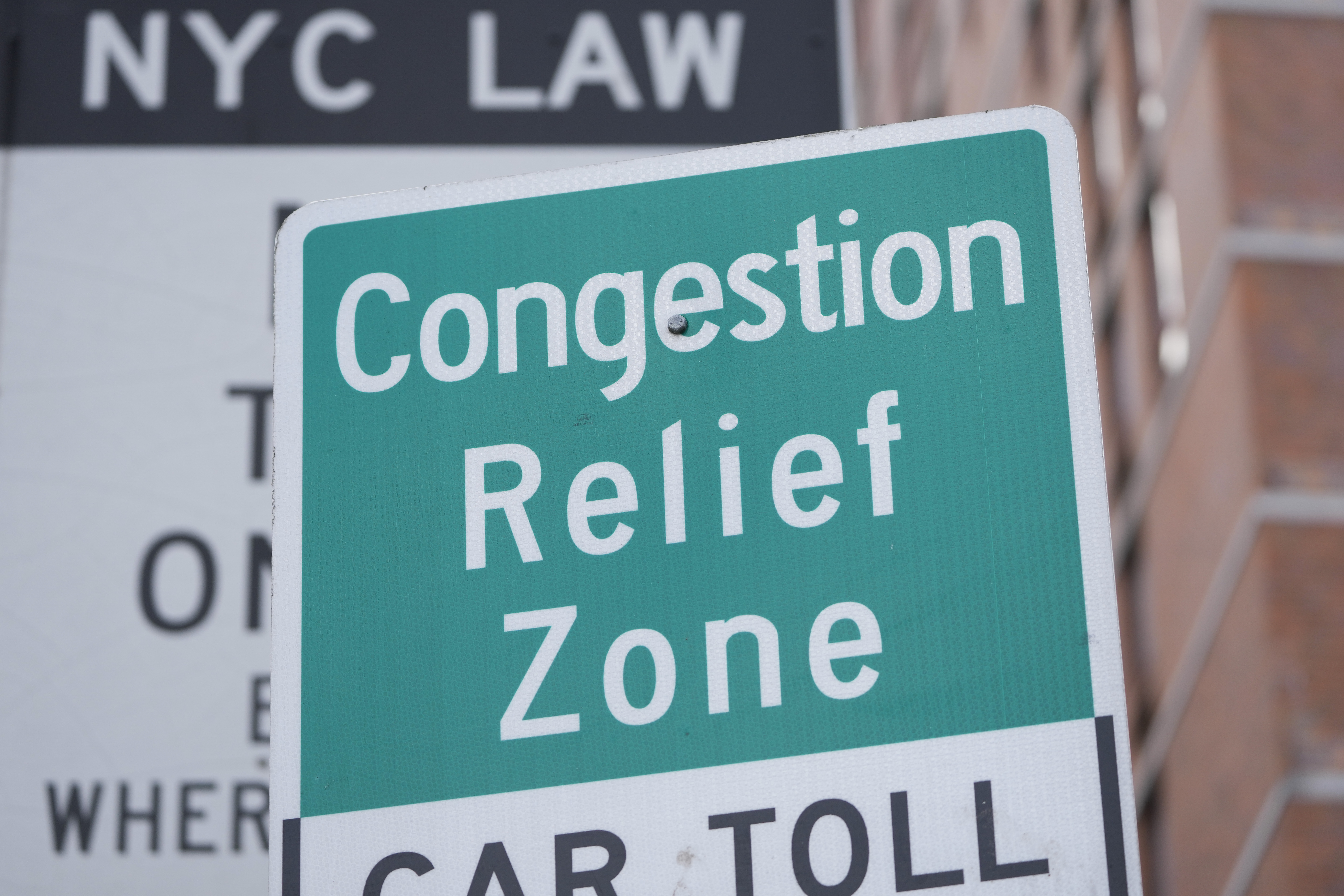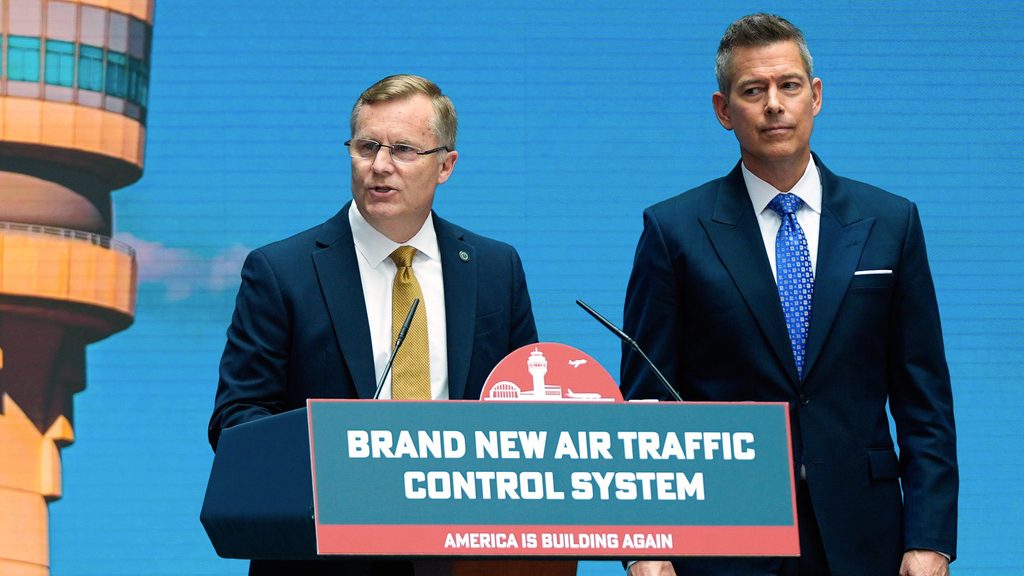NYC Congestion Pricing: Will It Be Switched Off Sunday?
NYC Congestion Pricing on the Brink: Will It Survive the Deadline?
Introduction: The Clock is Ticking!
New York City's controversial congestion pricing program, touted by state and transportation officials as a resounding success, finds itself at a critical juncture. The federal deadline to switch off the program's cameras – and essentially halt the initiative – is looming on Sunday. But, the question remains: is it likely to actually happen? Let's dive into the complexities surrounding this hot-button issue and explore the factors that will determine the fate of congestion pricing in the Big Apple.
The Federal Standoff: A Clash of Ideologies
The saga began with U.S. Transportation Secretary Sean Duffy, a vocal critic of the toll, labeling it a “slap in the face to working class Americans and small business owners.” He initially instructed the state to dismantle the program by March 21st. When New York officials stood their ground, a new deadline of April 20th was imposed. Governor Kathy Hochul, however, made it clear that the state intended to disregard this deadline as well. It's like a high-stakes game of chicken, but with billions of dollars and the city's transit system hanging in the balance.
From Deadline to Courtroom: The Legal Battle Begins
The dispute inevitably escalated to the federal courthouse in Manhattan. The Metropolitan Transportation Authority (MTA) launched a lawsuit against Duffy, challenging his February decision to revoke the federal approval for the toll. Advocates of congestion pricing argue that it's a crucial tool for discouraging unnecessary driving, alleviating traffic congestion, and, most importantly, generating billions of dollars for the city's struggling transit system. Is this a case of federal overreach, or a necessary intervention to protect commuters?
Congestion Pricing: What Exactly Is It?
How Does It Work?
For those unfamiliar, congestion pricing essentially charges drivers a toll for entering a designated zone in Manhattan, typically south of 60th Street. The goal? To disincentivize driving during peak hours, reduce traffic, and improve air quality. It's based on the principle that those who contribute to congestion should bear some of the cost.
The Potential Benefits
Proponents highlight several key benefits:
- Reduced Traffic: Fewer cars on the road mean less gridlock and shorter commute times.
- Improved Air Quality: Fewer vehicles translate to lower emissions and cleaner air.
- Funding for Transit: The revenue generated is earmarked for desperately needed upgrades and improvements to the city's subway and bus systems.
- Economic Boost: More efficient transportation can lead to increased productivity and economic activity.
The Opposition: Who Stands Against It?
Concerns about Affordability
The main criticism revolves around affordability. Opponents argue that congestion pricing unfairly burdens low-income workers and small business owners who rely on driving into Manhattan. For many, driving is not a luxury, but a necessity. Is it fair to penalize them for simply trying to make a living?
Impact on Businesses
Some business owners fear that the toll will discourage customers from visiting their establishments, leading to a decline in sales. They argue that it creates an economic barrier to entry, making it harder for them to compete. Will congestion pricing inadvertently hurt the very businesses it's meant to support?
Alternative Solutions
Critics also suggest exploring alternative solutions, such as improving public transportation in underserved areas, implementing better traffic management strategies, and promoting telecommuting. They believe that there are less punitive ways to address the city's congestion problem.
The MTA's Perspective: A Lifeline for Mass Transit
The MTA views congestion pricing as a critical source of funding for its capital program. The agency argues that the billions of dollars generated will be used to modernize the subway system, improve bus service, and enhance accessibility for people with disabilities. Without this revenue stream, they claim, essential upgrades will be delayed or cancelled, further crippling the city's already strained transit infrastructure.
The Legal Landscape: What's Next in Court?
The Arguments Being Made
The MTA's legal team is likely arguing that the federal government overstepped its authority by rescinding the toll's approval. They may also argue that the decision was politically motivated and lacked a sound legal basis. On the other hand, the federal government is likely arguing that it has the authority to regulate interstate commerce and that congestion pricing unfairly discriminates against drivers from outside the city.
Possible Outcomes
The court could rule in favor of the MTA, allowing congestion pricing to proceed. Alternatively, it could side with the federal government, effectively halting the program. A third possibility is that the court could issue a compromise ruling, requiring modifications to the program or imposing additional conditions. The outcome of this legal battle will have profound implications for the future of transportation in New York City.
The Politics of Congestion: A Divisive Issue
Congestion pricing has become a highly politicized issue, with strong opinions on both sides of the spectrum. Some politicians support the program as a bold and necessary step to address the city's transportation challenges. Others oppose it, citing concerns about affordability and its potential impact on businesses. The political climate surrounding this issue makes it even more difficult to find a solution that satisfies everyone.
Beyond the Deadline: Potential Scenarios
Scenario 1: The Toll Goes Live
If the court rules in favor of the MTA, or if a settlement is reached, congestion pricing could be implemented as planned. This would involve installing tolling infrastructure, educating the public about the program, and enforcing the toll. The immediate impact would be a reduction in traffic in the congestion zone, followed by a gradual improvement in air quality and transit service.
Scenario 2: The Toll Is Delayed
Even if the MTA wins the legal battle, there could still be delays in implementing the program. Technical challenges, logistical hurdles, and public opposition could all contribute to delays. This would mean a continued struggle with traffic congestion and a delay in the much-needed funding for transit improvements. Think of it as a frustrating traffic jam on the road to progress.
Scenario 3: The Toll Is Scrapped
If the court rules against the MTA, or if the political opposition becomes too strong, congestion pricing could be abandoned altogether. This would be a major setback for the city's transportation goals, potentially leading to even worse traffic congestion, deteriorating air quality, and a continued decline in the transit system. This could set the city back years in its efforts to modernize its infrastructure.
The Economic Impact: A Mixed Bag
The economic impact of congestion pricing is a subject of much debate. Proponents argue that it will boost the economy by improving productivity, reducing travel times, and creating jobs in the transit sector. Opponents worry that it will hurt businesses, discourage tourism, and disproportionately impact low-income workers.
Long Term Effects
The long-term economic effects will likely depend on how well the program is implemented and how effectively the revenue is used to improve transit. If the funds are used wisely to modernize the subway and bus systems, the city could see a significant return on investment.
The Environmental Angle: Breathing Easier?
One of the main goals of congestion pricing is to reduce air pollution. By discouraging driving, the program aims to lower emissions of harmful pollutants, such as carbon monoxide, nitrogen oxides, and particulate matter. This could lead to significant improvements in air quality, particularly in the most congested areas of Manhattan. It's like giving the city's lungs a much-needed breath of fresh air.
Public Opinion: What Do New Yorkers Think?
Public opinion on congestion pricing is divided. Some New Yorkers support the program as a necessary solution to the city's traffic problems. Others oppose it, citing concerns about affordability and its potential impact on businesses. Polls show a wide range of opinions, depending on the specific questions asked and the demographics of the respondents. It's a contentious issue that sparks passionate debate among residents.
The Global Context: Lessons from Other Cities
New York City is not the first city to consider congestion pricing. London, Singapore, and Stockholm have all implemented similar programs with varying degrees of success. These cities offer valuable lessons for New York, both in terms of what to do and what to avoid. Studying their experiences can help New York fine-tune its own program and maximize its effectiveness.
Conclusion: A Crossroads for New York City
As the federal deadline looms, the fate of congestion pricing in New York City hangs in the balance. The legal battle, the political maneuvering, and the public debate all contribute to the uncertainty surrounding this controversial issue. Whether the toll goes live, is delayed, or is scrapped altogether, the outcome will have a profound impact on the city's transportation system, its economy, and its environment. The clock is ticking, and the world is watching.
Frequently Asked Questions
Q1: What exactly is congestion pricing and how will it affect me?
A1: Congestion pricing is a tolling system where drivers are charged a fee for entering a specific zone (typically Manhattan south of 60th Street) during certain hours. If you drive into this zone regularly, you'll be impacted financially, but potentially benefit from reduced traffic.
Q2: How much will the congestion toll be?
A2: The exact toll amount is still being finalized, but estimates have ranged from $9 to $23 for cars during peak hours. The final amount will depend on the time of day, day of the week, and type of vehicle.
Q3: Where will the money from congestion pricing go?
A3: The revenue generated from congestion pricing is earmarked for improvements to New York City's public transportation system, including subway and bus upgrades, accessibility improvements, and signal modernization.
Q4: Are there any exemptions or discounts for certain drivers?
A4: The details of exemptions and discounts are still under discussion, but there may be considerations for emergency vehicles, drivers with disabilities, and low-income commuters. However, nothing has been officially confirmed.
Q5: What are the alternatives to congestion pricing being considered?
A5: Some alternatives being discussed include improving public transportation in underserved areas, implementing better traffic management strategies (like synchronized traffic signals), and promoting telecommuting to reduce the overall demand for driving into Manhattan.



